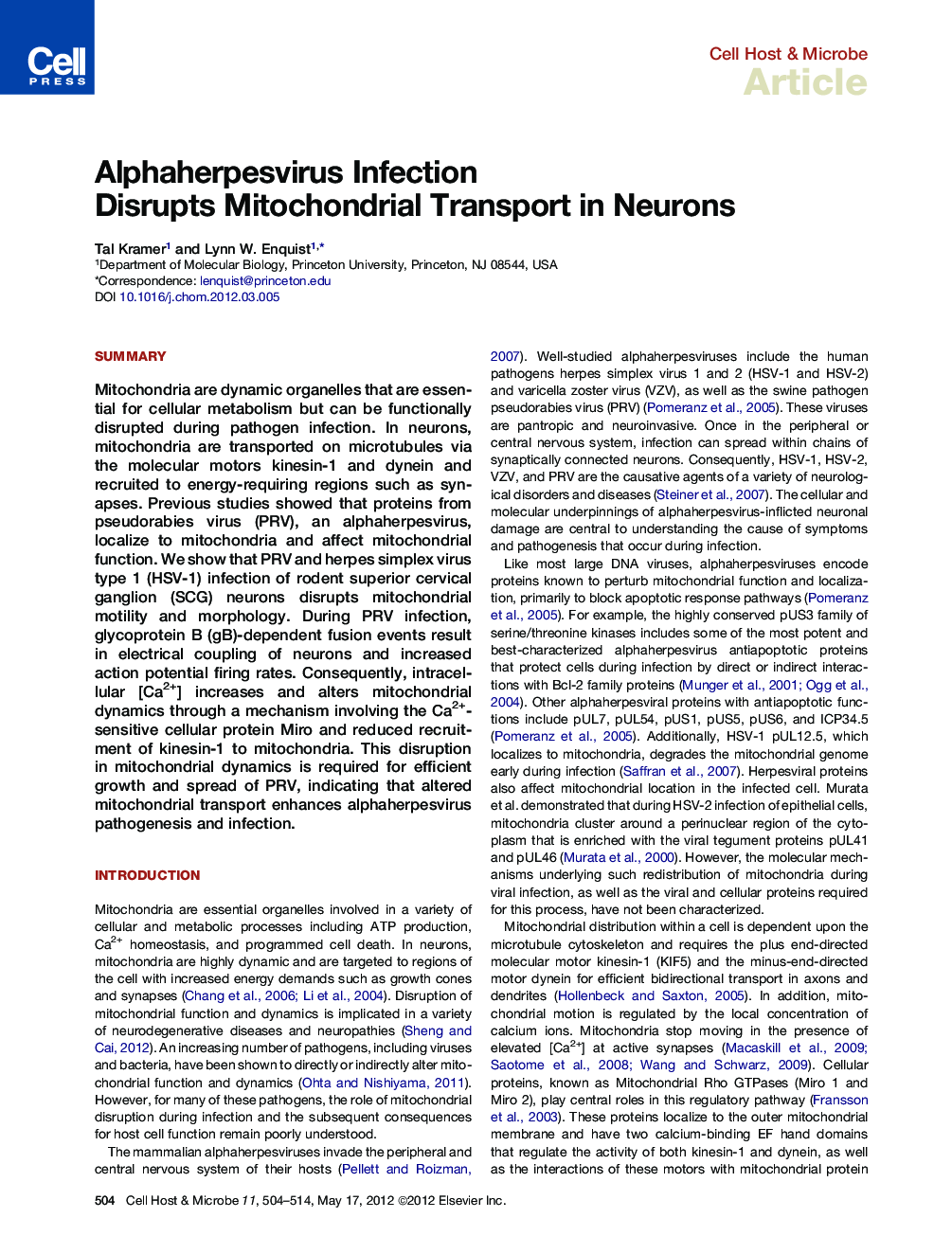| کد مقاله | کد نشریه | سال انتشار | مقاله انگلیسی | نسخه تمام متن |
|---|---|---|---|---|
| 4361225 | 1301362 | 2012 | 11 صفحه PDF | دانلود رایگان |

SummaryMitochondria are dynamic organelles that are essential for cellular metabolism but can be functionally disrupted during pathogen infection. In neurons, mitochondria are transported on microtubules via the molecular motors kinesin-1 and dynein and recruited to energy-requiring regions such as synapses. Previous studies showed that proteins from pseudorabies virus (PRV), an alphaherpesvirus, localize to mitochondria and affect mitochondrial function. We show that PRV and herpes simplex virus type 1 (HSV-1) infection of rodent superior cervical ganglion (SCG) neurons disrupts mitochondrial motility and morphology. During PRV infection, glycoprotein B (gB)-dependent fusion events result in electrical coupling of neurons and increased action potential firing rates. Consequently, intracellular [Ca2+] increases and alters mitochondrial dynamics through a mechanism involving the Ca2+-sensitive cellular protein Miro and reduced recruitment of kinesin-1 to mitochondria. This disruption in mitochondrial dynamics is required for efficient growth and spread of PRV, indicating that altered mitochondrial transport enhances alphaherpesvirus pathogenesis and infection.
► Alphaherpesvirus infection of neurons dramatically reduces mitochondrial motion
► Intracellular [Ca2+] increases due to the action of viral membrane fusion proteins
► Efficient viral growth and spread require disrupted mitochondrial dynamics
► Mitochondrial motility disruption is a pathogenic effect of alphaherpesvirus infection
Journal: - Volume 11, Issue 5, 17 May 2012, Pages 504–514